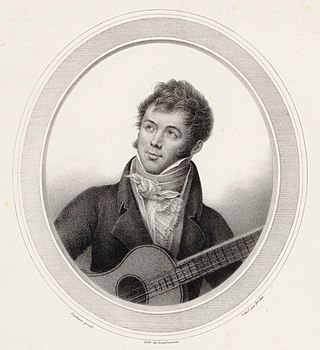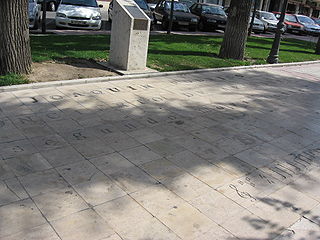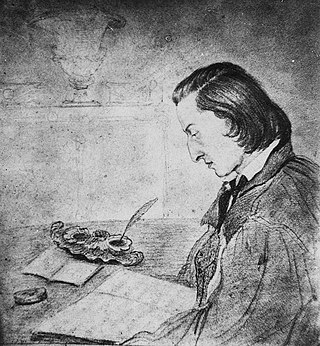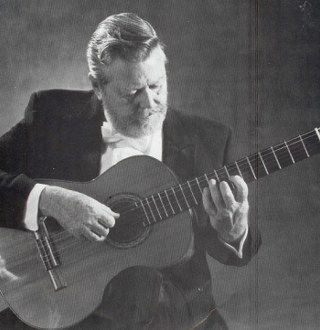
Introduction and Variations on a Theme by Mozart, Op. 9, is one of Fernando Sor's most famous works for guitar. [1] [2] [3] [4] [5] It was first published in London in 1821 and dedicated to Sor's brother Carlos. [3]

Introduction and Variations on a Theme by Mozart, Op. 9, is one of Fernando Sor's most famous works for guitar. [1] [2] [3] [4] [5] It was first published in London in 1821 and dedicated to Sor's brother Carlos. [3]
The title page of the first edition reads “As performed by the author, at the Nobilities’ Concerts.” The French edition was published by Meissonnier, dated roughly in the same period, and had one less variation, no coda, and some differing notes. It is thought that this version could have been a simplification of the original work. However, in 1826 or 27, Meissonnier brought out another version, this one identical to the London first edition. [3]

This piece embodies Fernando Sor's best characteristics as a composer, requiring great technique. [4] It is a relatively frequently performed piece that serves as a “testing ground for every aspiring guitarist” [1] As Brian Jeffrey, author of the largest Sor biography to date, wrote of this piece and Op. 7, the Folies d’Espagne,[ clarification needed ] “no space is wasted and the music devotes itself not to 'guitaristic' effects but only to itself”. [3]
The work is based on a melody from Mozart's opera The Magic Flute . The opera was first performed in Vienna, 1791, and in German, while the first performances in Italian took place in 1794, so Sor could have feasibly written the piece any time since then. However, it is more likely that he was inspired to write the piece when the first major production was premiered in England in May 1819, when Sor was in the area. [3]
The theme and the variations are based on one that was used in numerous composer's arrangements, some being by the flutist Drouet, by Henri Herz, and by Mikhail Glinka. It is the theme played near the end of act 1 as Papageno charms the slaves of Sarastro with his magic chimes. The theme is called “Das klinget so herrlich”, [6] [7] in Italian either translating to "O dolce concento", "O dolce armonia", or, as Sor chose to use, "O cara armonia". This last translation was also used in the vocal score of The Magic Flute published in Birchall, London in around 1813. [3]
Sor's theme differs somewhat from Mozart's original, as may be seen in the comparison above/right. The time and key signatures of the originals have been changed and repeats deleted to better make the comparison. None of the bars (measures) are exactly the same but most only differ slightly.

The classical guitar, also known as Spanish guitar, is a member of the guitar family used in classical music and other styles. An acoustic wooden string instrument with strings made of gut or nylon, it is a precursor of the modern steel-string acoustic and electric guitars, both of which use metal strings. Classical guitars derive from instruments such as the lute, the vihuela, the gittern, which evolved into the Renaissance guitar and into the 17th and 18th-century baroque guitar. Today's modern classical guitar was established by the late designs of the 19th-century Spanish luthier, Antonio Torres Jurado.

Andrés Segovia Torres, 1st Marquis of Salobreña was a Spanish virtuoso classical guitarist. Many professional classical guitarists were either students of Segovia or students of Segovia's students. Segovia's contribution to the modern-romantic repertoire included not only commissions but also his own transcriptions of classical or baroque works. He is remembered for his expressive performances: his wide palette of tone, and his distinctive musical personality, phrasing and style.
In music, variation is a formal technique where material is repeated in an altered form. The changes may involve melody, rhythm, harmony, counterpoint, timbre, orchestration or any combination of these.

Julian Alexander Bream was an English classical guitarist and lutenist. Regarded as one of the most distinguished classical guitarists of the 20th century, he played a significant role in improving the public perception of the classical guitar as a respectable instrument. Over the course of a career that spanned more than half a century, Bream also helped revive interest in the lute.

Fernando Sor was a Spanish classical guitarist and composer of the late Classical era and early Romantic era. Best known for writing solo classical guitar music, he also composed an opera, three symphonies, guitar duos, piano music, songs, a Mass, and at least two successful ballets: Cinderella, which received over one hundred performances, and Hercule et Omphale.

Dionisio Aguado y García was a Spanish classical guitarist and composer of the late Classical and early Romantic periods.

Claude Antoine Jean Georges Napoléon Coste was a French classical guitarist and composer.

The Concierto de Aranjuez is a concerto for classical guitar by the Spanish composer Joaquín Rodrigo. Written in 1939, it is by far Rodrigo's best-known work, and its success established his reputation as one of the most significant Spanish composers of the 20th century.
John William Duarte was a British composer, guitarist and writer.

Angelo Gilardino was an Italian composer, guitarist, and musicologist.

Giulio Regondi was a Swiss-born classical guitarist, concertinist and composer active in France and (mainly) the United Kingdom.
Mark Delpriora is an American classical guitarist and composer.

Frédéric Chopin's "Berceuse", Op. 57, is a lullaby to be played on the piano. He composed it in 1843/44 as variations in D-flat major. Chopin originally called his work "Variantes". "Berceuse" was first published in Paris in 1844 by Jean-Racine Meissonnier, dedicated to Chopin's pupil Élise Gavard, and appeared in London and Leipzig the following year.

Pierre-Jean Porro was an influential French classical guitarist, composer and music publisher.
José Rey de la Torre was one of the most significant classical guitarists of the mid-twentieth century, and considered by many to be the father of "modern classical guitar technique".
David Joseph Buch is an American musicologist.
Nocturnal After John Dowland, Op. 70 is a classical guitar piece composed in 1963 by English composer Benjamin Britten for guitarist Julian Bream. It is considered one of the most influential works written in the twentieth century for the classical guitar.

Héctor Antonio García Hernandez was a Cuban-American classical guitarist and composer. He established the first guitar departments in United States universities, at the College of St. Joseph on the Rio Grande in 1963 and the University of New Mexico at Albuquerque in 1967, where he taught for about 20 years.

The Magic Flute, an opera by Wolfgang Amadeus Mozart with libretto by Emanuel Schikaneder, was composed in 1791 and premiered to great success. It has been an important part of the operatic repertory ever since, and has inspired a great number of sequels, adaptations, novels, films, artwork, and musical compositions.

Juan Antonio Mercadal was a Cuban guitarist.